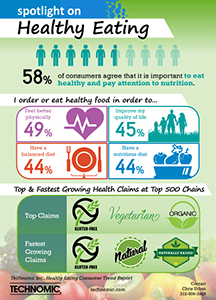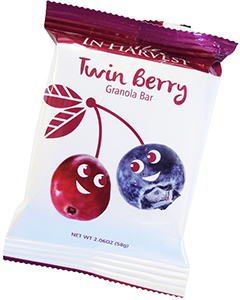Guest Speaker: Tech Is the Trend of the Year—and Next Year, Too
Thursday, 15 January 2015 03:00Of all the trends reporters and firms who generate copy near the end of each year, Baum+Whiteman is oft overlooked. Yet where U.S. F&B trends are concerned, arguably the company’s principals have their collective thumb on the proper pulse of the nation most firmly. So when they say tech is king in 2015, you can take that to the bank.
Courtesy of Baum+Whiteman
Forget cronuts and Negronis. Forget quinoa and kale. Short of putting food into our mouths, technology is upending the way dining out works. Electronic wizardry once hummed quietly in the background ... but now we’re immersed in “front-facing technology” or “guest-facing technology”: all sorts of devices and programs that interface directly with the consumer. More restaurant companies experiment with tablets ... letting guests order food and drink from their tables; play games while they’re waiting; then pay with smartphones ... meeting a waiter when an order is delivered, or when it’s time for a refill from the bar, or for upselling desserts. Tables turn faster by eliminating downtime during which little happens and customers start fidgeting.

 Consumers increasingly want to know what’s in their food, says Technomic. Can restaurants produce dishes that are both wholesome and delicious? A majority of diners apparently thinks so.
Consumers increasingly want to know what’s in their food, says Technomic. Can restaurants produce dishes that are both wholesome and delicious? A majority of diners apparently thinks so. From molecular gastronomy to the growing demand for smaller-footprint, multipurpose devices, today’s foodservice students must be exposed to and proficient at utilizing modern cooking equipment while developing critical thinking skills to anticipate the advanced technologies of tomorrow.
From molecular gastronomy to the growing demand for smaller-footprint, multipurpose devices, today’s foodservice students must be exposed to and proficient at utilizing modern cooking equipment while developing critical thinking skills to anticipate the advanced technologies of tomorrow. Cricket flour, cannabis, snack bars and sustainable packaging make the list.
Cricket flour, cannabis, snack bars and sustainable packaging make the list. The Culinary Institute of America and Restaurant Associates announce a new partnership designed to accelerate innovation in contract-foodservice operations of the future.
The Culinary Institute of America and Restaurant Associates announce a new partnership designed to accelerate innovation in contract-foodservice operations of the future.